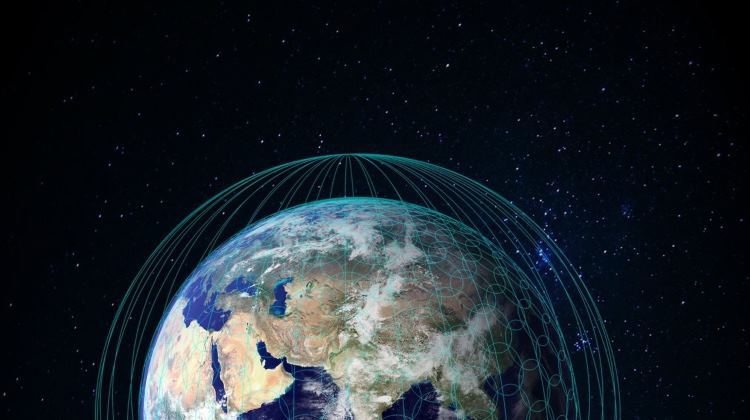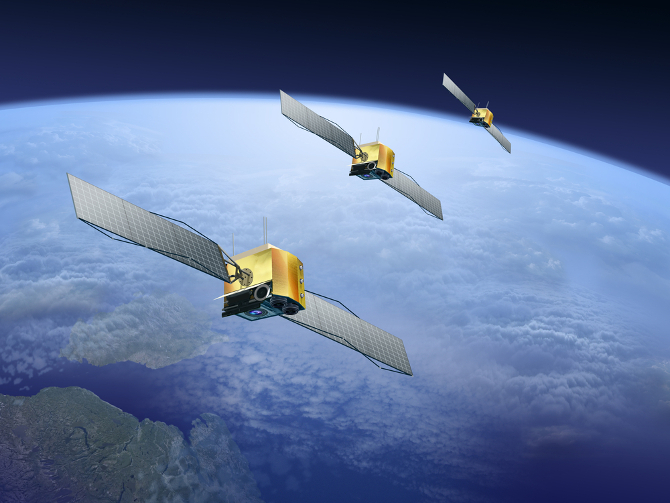Satellite Internet for everyone: how much does a network cost to build?

The beginning of the year turned out to be very interesting: several large companies at once declared their intention to invest heavily in the creation of a network from communication orbital satellites. According to the developers, such a network will be able to provide Internet access to users of remote, hard-to-reach regions. In such areas, the network infrastructure is either not at all, or it is very underdeveloped.
Of course, projects that are related to the launch of satellites, can not be inexpensive. Who are these investors and what do they hope for? The main players of the new market are Richard Branson, head of the Virgin, and Ilon Musk, head of SpaceX (and, in combination, Tesla Motors).
Satellite veteran
As for Branson, this entrepreneur plans to work with OneWeb (formerly WorldVu Satellites Ltd). Another project partner is Qualcomm . It is currently not known which of the partners invested how much (or is going to invest in the business).
')

The main objective of the project is the launch of 648 small orbital satellites, each of which weighs 130 kilograms. The satellites are scheduled to launch into low orbit (1,200 kilometers). According to experts, the cost of one satellite, together with the launch into orbit, will cost 350 thousand US dollars. Virgin will be launching the satellites, which is developing its own spacecraft. This is one of the strengths of the project.
The launch of the project requires from 1.5 to 2 billion dollars, and the start of the launch of satellites is planned for 2018.
By the way, OneWeb has the right to use a certain range of frequencies, which will be involved in the work of "satellite Internet for all." The use of frequencies is planned through the International Telecommunications Union. This is another strong point of the project.
The project team currently employs about 30 engineers who are developing satellites, antennas for communication equipment and software for OneWeb.
New player
Another strong, albeit new, player in the satellite Internet communications market may be the SpaceX company Ilona Mask. The company plans to launch 700 microsatellites, each weighing 115 kilograms. At the same time, Ilon Musk announced his intention to launch all the satellites in November of this year.

It is worth noting that these satellites are also planned to be placed in a low orbit of 1,200 kilometers. This is a much closer distance than the one on which most traditional communications satellites operate. According to Mask, the data transfer rate in a satellite network can be 40% higher than in the case of data transmission over optical fiber. The fact is that the speed of propagation of a beam of light in a vacuum is just 40% higher than the speed of propagation of light through an optical fiber.
The project team now has about 60 people, and the team can be expanded up to 1000 people over a period of 3-4 years. All employees also work on the FalconX launch vehicle and Dragon capsule project. By the way, FalconX, according to the plan, will carry satellites into orbit. Just the other day, SpaceX had another partner - Google, which together with its partners (Peter Thiel's Founders Fund, search engine pocket fund - Fidelity, Draper Fisher Jurvetson, Valor Equity Partners and Capricorn) invested $ 1 billion in the project.
The Mask project is much more expensive - its price is about 10 billion US dollars . To bring the system to the operating level will take at least five years. However, the future network will become a communication line not only for the Earth, but, possibly, for Mars. In any case, Ilon Mask hopes for the possibility of connecting the Red Planet to the global network. With one, true condition - a colony will be based on Mars, and this colony will begin to develop.
And now - into battle!
As you can see, the projects from SpaceX and OneWeb are almost identical. Who has the advantage here? It's not clear yet. Not long ago, Ilon Musk seemed to be negotiating to work with OneWeb. But after a while he said that “our companies are, more likely, competitors than partners. Greg (head of OneWeb - ed.) And I have different views on the system architecture. We want to create a satellite network that is more complicated than Greg thinks possible. I think we should create two competing systems. ”
Who else?
In addition to Mask and Branson, there are also such giants as Google and Facebook on the market (future) for hard-to-reach regions. As for the "Corporation of Good", this company since 2013 has been actively working on the implementation of the Project Loon project. The goal is to provide communication using a network of balloons. Now the company's balloons are being tested at work and have already (more than one million kilometers) passed.
As mentioned above, Google can join forces with Space X, thus obtaining a hybrid network with huge coverage and probably low communication prices. Compete with such a tandem can be very difficult.
As for Facebook, the company plans to connect remote regions through drones. Mark Zuckerberg announces plans to create a hybrid network, where the main role will be played by UAVs, which will cover the regions with large enough areas.
What is the result?
Probably, if such large players as Virgin, SpaceX, Google and Facebook are investing billions of dollars in the development of such a network, companies are hoping to make a profit from it. It is unlikely that someone will invest such money just like that, right? Now it is important to stake out a place, occupy a niche, and begin to work actively, attracting customers.
And the money - they will return. Not now and not in a year, perhaps in 10-20 years. But the fact that such networks will be commercially profitable, now almost no one doubts.
Source: https://habr.com/ru/post/283590/
All Articles